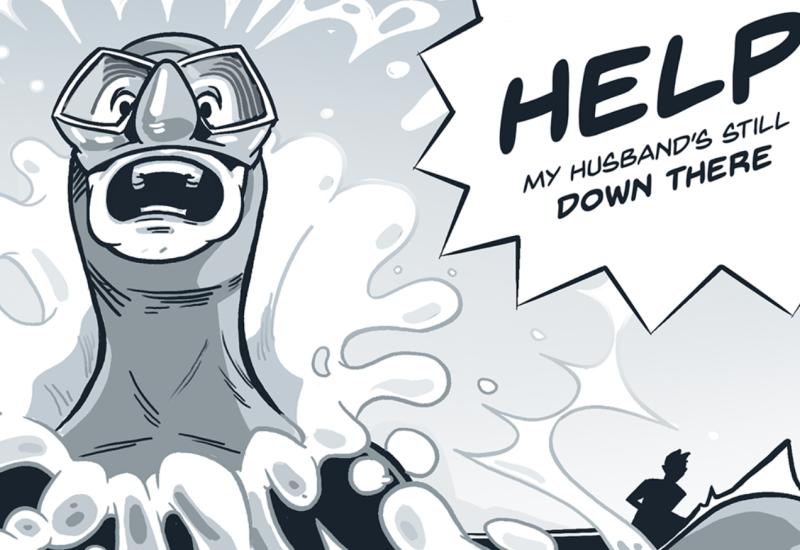ASK DAN: How Do I Avoid Mask Squeeze?

Courtesy of DANHow do I avoid mask squeeze?
Just as you must equalize the pressure in your sinuses and middle ears, you must also equalize the pressure in your mask as you descend. Failure to add air to the mask (by exhaling through the nose) will lead to a differential between the air pressure in the mask and the vascular pressure within the blood vessels of the face. The pressure differential can cause a mask squeeze and result in facial barotrauma, which is an injury to the soft tissues of the face contained within the mask (imagine your face in a suction cup). Mask squeezes cause negative pressure over the soft tissues beneath the mask, which engorges the blood vessels in the area. The result ranges from mild discomfort to pain. After the situation is resolved by properly equalizing the mask or ascending to the surface, you may experience some swelling in the affected area and red, brown or purple spots (called petechiae), particularly on your eyelids. Mask squeeze injuries may also be associated with ear or sinus barotraumas. In some cases, subconjunctival hemorrhage (blood from burst vessels) may appear in the white of the eye. Visual disturbances are rare, but they are a sign of a more severe injury and require immediate medical evaluation.
During the healing process, blood will change color from red to yellowish before the eye returns to its normal white col-or. This healing is a natural process that corresponds with how your body metabolizes blood.
TREATMENT
Unless you are experiencing eye pain or visual problems, The only treatment for facial barotrauma is time. Because it is essentially a bruise, your body will reabsorb the blood. If you have eye pain, blurred vision or loss of part of your visual field, or it appears that blood has accumulated in the iris (the colored part of the eye), see your physician immediately. Depending on the extent of the injury, the symptoms of mask squeeze may take two weeks or more to resolve. It will prob ably look worse before it gets better. The bruising is gravity dependent, meaning it will spread downward on your face.
WHO GETS MASK SQUEEZE?
New divers are most at risk, as they tend to be overwhelmed by all the skills they need to remember, such as buoyancy control and equalization of their ears and sinuses while adjusting to an unfamiliar environment. However, experienced divers are not immune and tend to get it when they are concentrating on a new activity or task that diverts their attention from equalizing their mask. Changing to a new mask or a low-volume mask may also lead to mask squeeze because the diver may not be accustomed to when to add air. Poor-fitting masks or other factors, such as facial hair, may lead to problems with equalizing.
PREVENTION
The solution to preventing mask squeeze is to keep your nasal passage ways open during descent by blowing small amounts of air through your nose every time you equalize your ears. By exhaling through your nose and using a properly fitted mask, you will minimize the risk of facial barotrauma.
A mask should fit comfortably against your face. The mask should seal to your face and not fall off even without them ask strap in place. It is not unusual for a small amount of leakage to occur while diving, especially if you have facial hair. Exhaling through your nose and tilting your face toward the surface while cracking the lower seal of the mask will generally remove any unwanted water from your mask. This technique will also keep the air space between the mask and your face adequately. If you believe you may have suffered a mask squeeze, call the DAN Emergency Hotline (+1-919-684-9111) for recommendations.
If you need to see a doctor, they will not necessarily need to have expertise in dive medicine any doctor should be able to help.
If you undergo an examination by a doctor, they will check for vision deficiencies and assess your ears and vestibular function. They’ll recommend that you avoid diving until swelling and inflammation have resolved, and may suggest you shore up your ability to properly equalize air spaces (ears, sinuses, and mask).
You can consider a return to diving when a physician determines that the risk of further injury is minimal and manageable. Assess why the problem occurred, address each relevant factor, and consider working with a dive professional to prevent future mask squeezes.
For more information, visit dan.org










